Guide to Anchoring Ground Tackle - parts, checks, deployment
When you ask the marina expert about anchoring, inevitably, the old salt is going to mutter something about "good ground tackle" and how you need to have the right gear for your boat. But what is "ground tackle," and how do you know it's what you need?
Ground tackle is all the equipment used to anchor your boat. The anchor, the rope or chain, and everything else you use. Good ground tackle is sized to match the boat and the conditions where you expect to use it.
There are a lot of options within that short list, so read on to see what you might need.
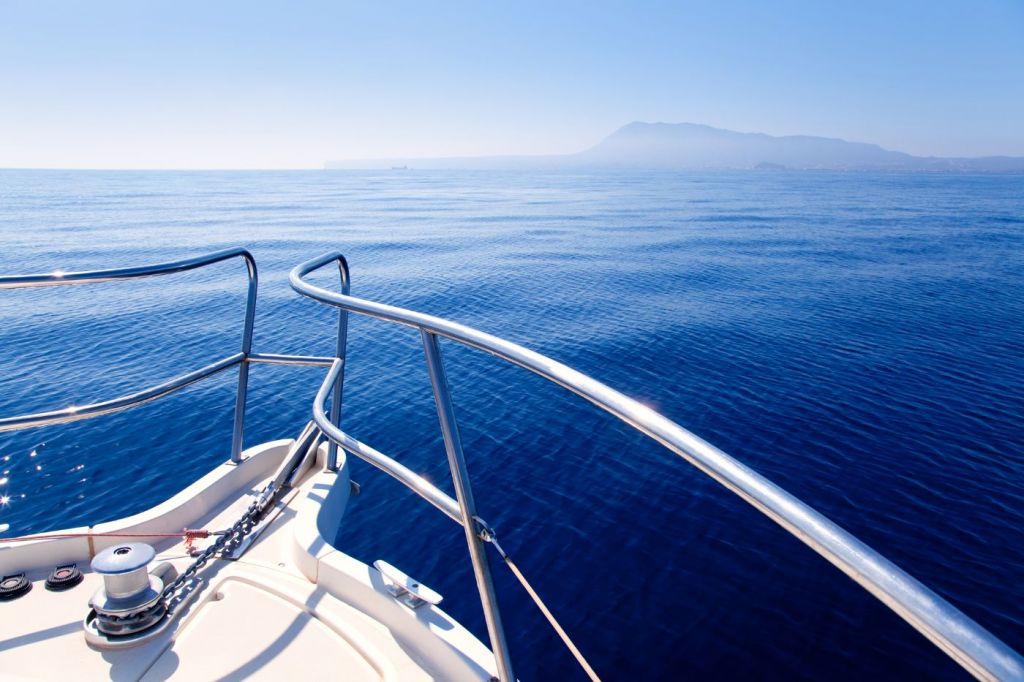
On this page:
What is Ground Tackle?
At a minimum, your ground tackle includes the anchor, the rode, and any shackles to connect them to each other or the boat. In addition, it may include snubbing lines, and additional hardware to help release, mark or set the anchor. It also may include a windlass or any other tools used in anchoring your boat.
While a windlass is fixed to your boat and the rest of the ground tackle is not, it is an important component in the anchoring process.
What is the purpose of ground tackle?
Ground tackle is used to hold the boat in place by digging an anchor in the bottom. Used properly, your ground tackle should hold your boat in most normal weather where you sail. If you're expecting serious weather and storms, you may need to take extra precautions.
Ground tackle parts
Not every sailor uses all the tools for anchoring. At a minimum, you need an anchor and a line to connect it to your boat.
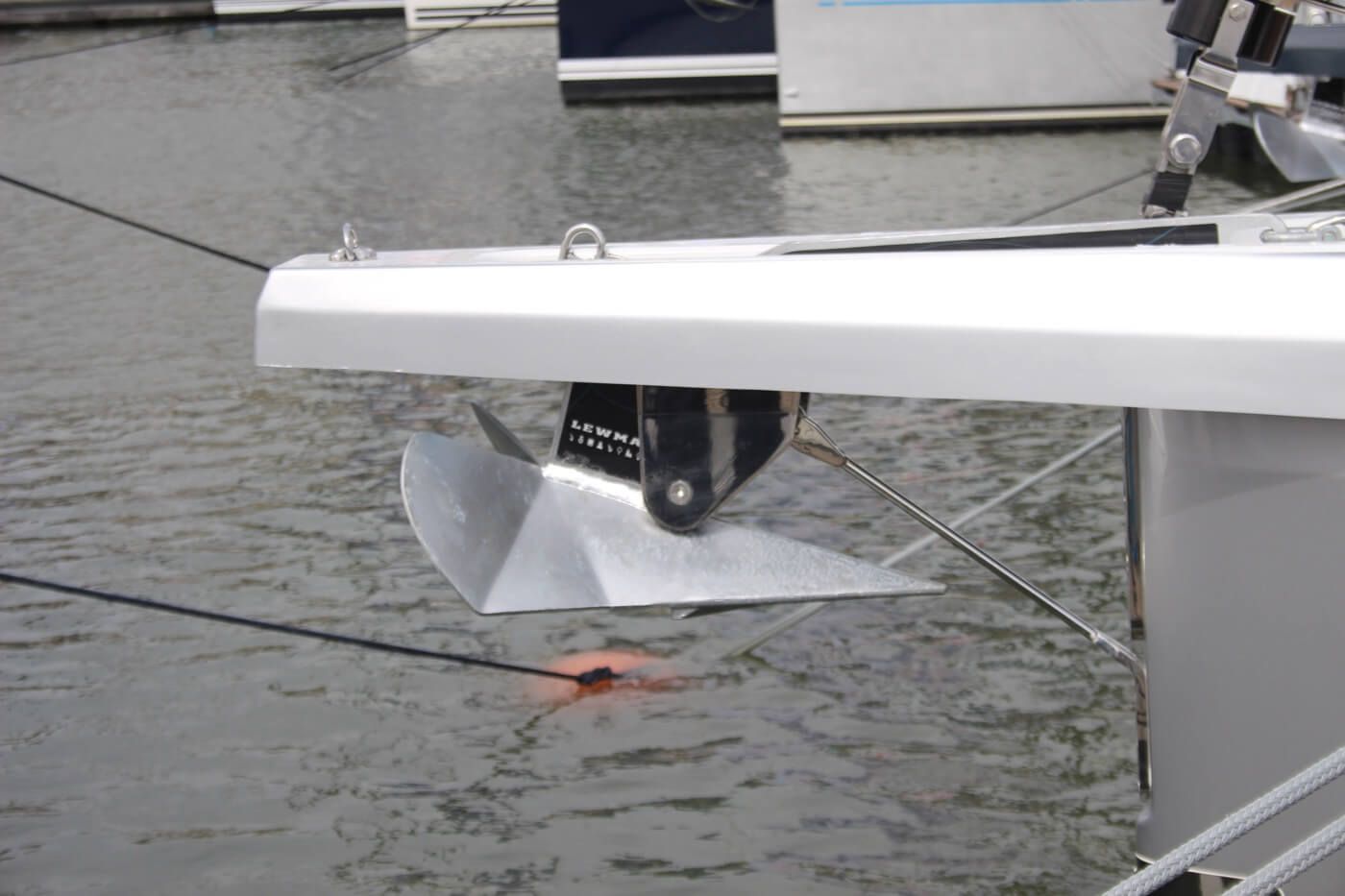
Anchor
Anchors come in a wide variety of designs and weights. Different styles of anchors hold better in some bottom types and poorly in others, and your choice of anchor will depend on where you usually anchor. Many sailors carry multiple anchors to deal with the different holding conditions they may run across. Ideally, your primary anchor will be a good all-around choice for more conditions.
Most anchors are run off the bow, but stern anchors can help keep a boat from swinging.
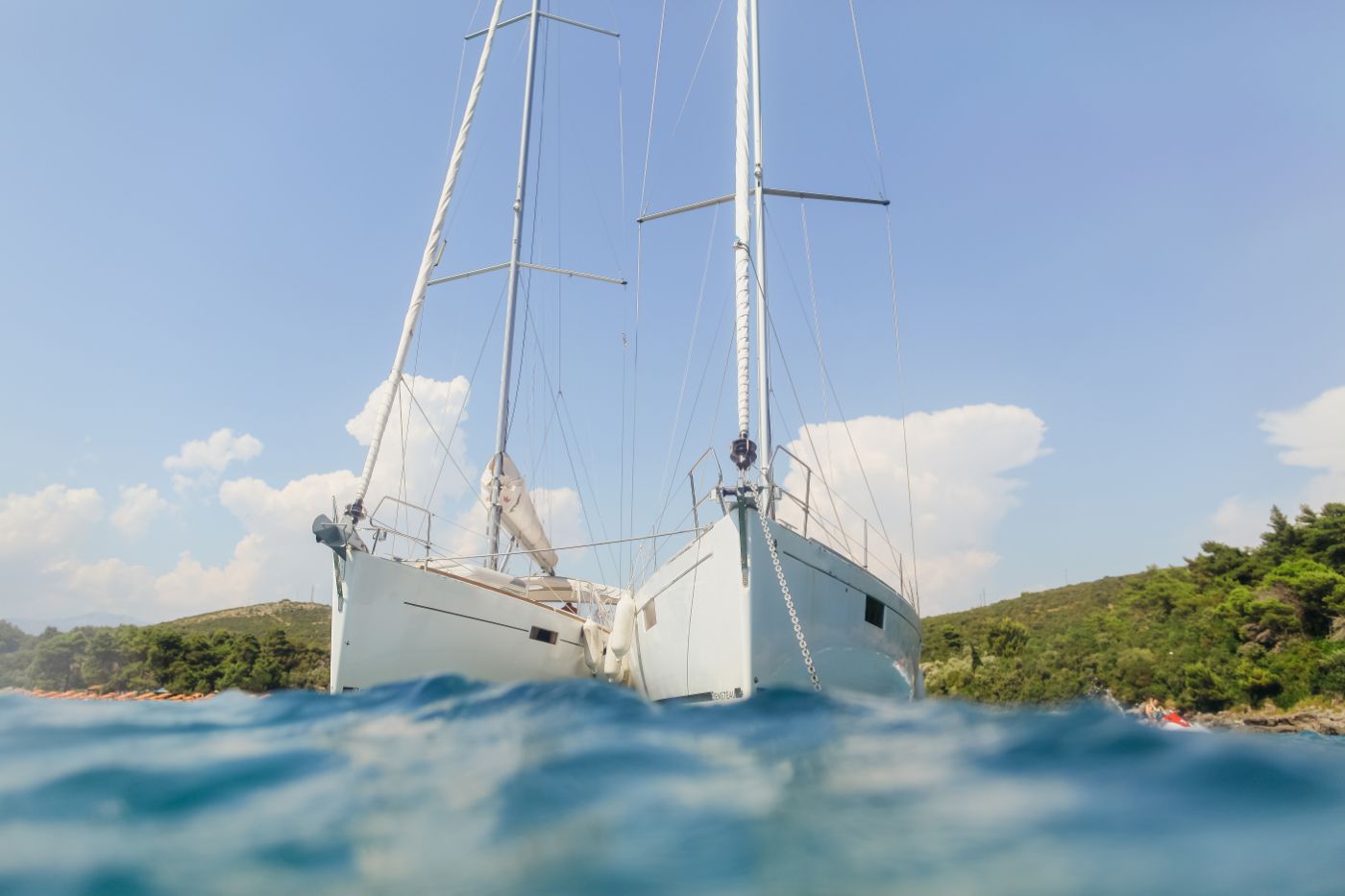
Rode
The rode is the line which connects the anchor to the boat. A rode can be chain or rope, but most rope rodes also have a length of chain at the end which connects to the anchor. The chain is a key part of keeping an anchor flat on the bottom and directing the pull from the boat in the right direction along the shank of the anchor.
A rope rode should tie off on a cleat, and a chain rode should have a snubber tied on a cleat.
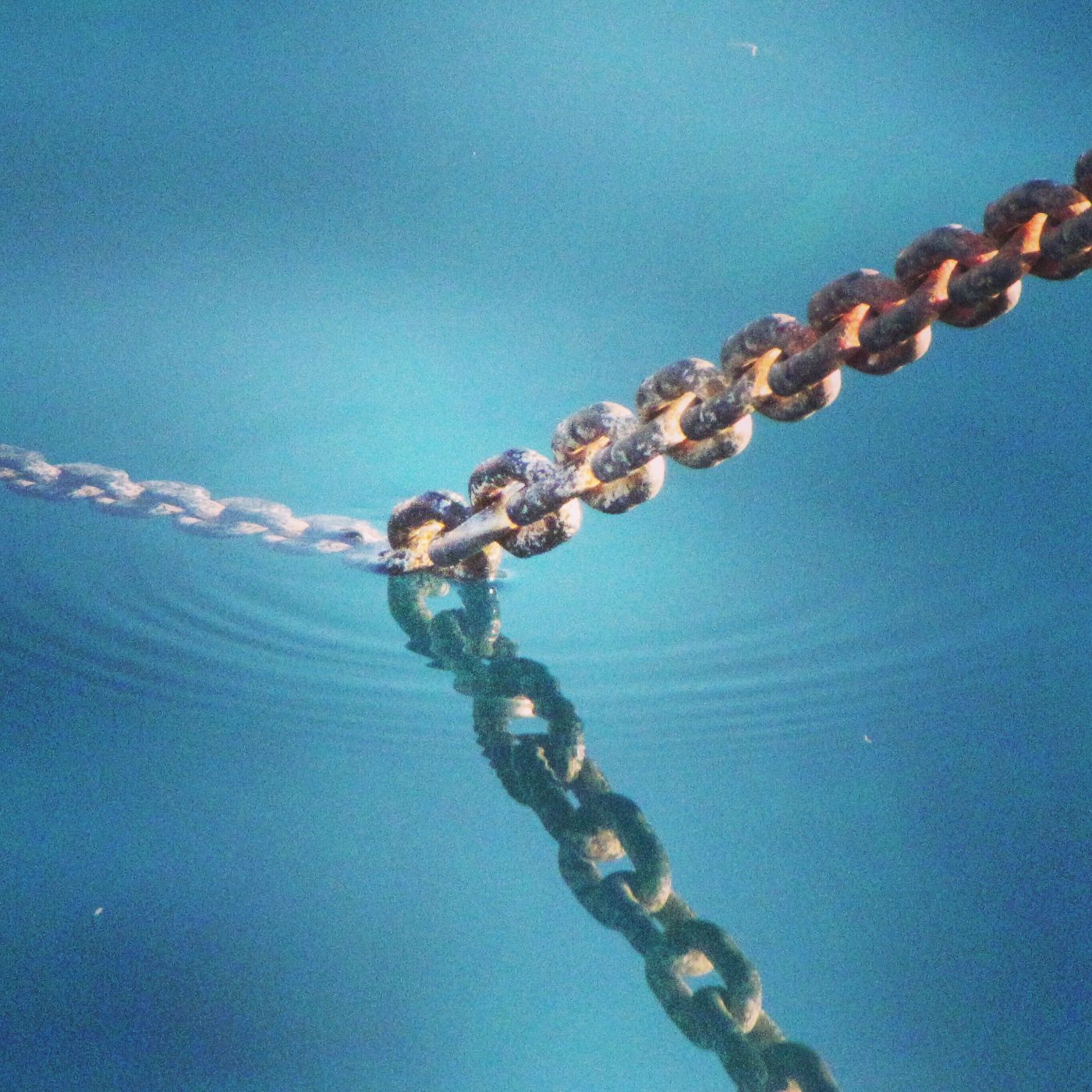
Shackles
Shackles hold chain to anchors and may attach the spliced eyes on rope rodes to the chain. Don't overlook the shackle when you're picking out your gear, and remember the pins should always be seized (wrapped with stainless seizing wire) to keep them from coming loose.
Windlass
Available in powered and manual options for smaller boats, and windlass takes most of the work out of setting and retrieving your anchor. With a large, all chain rode, a windlass makes the task manageable and can get your anchor up quickly and easily.
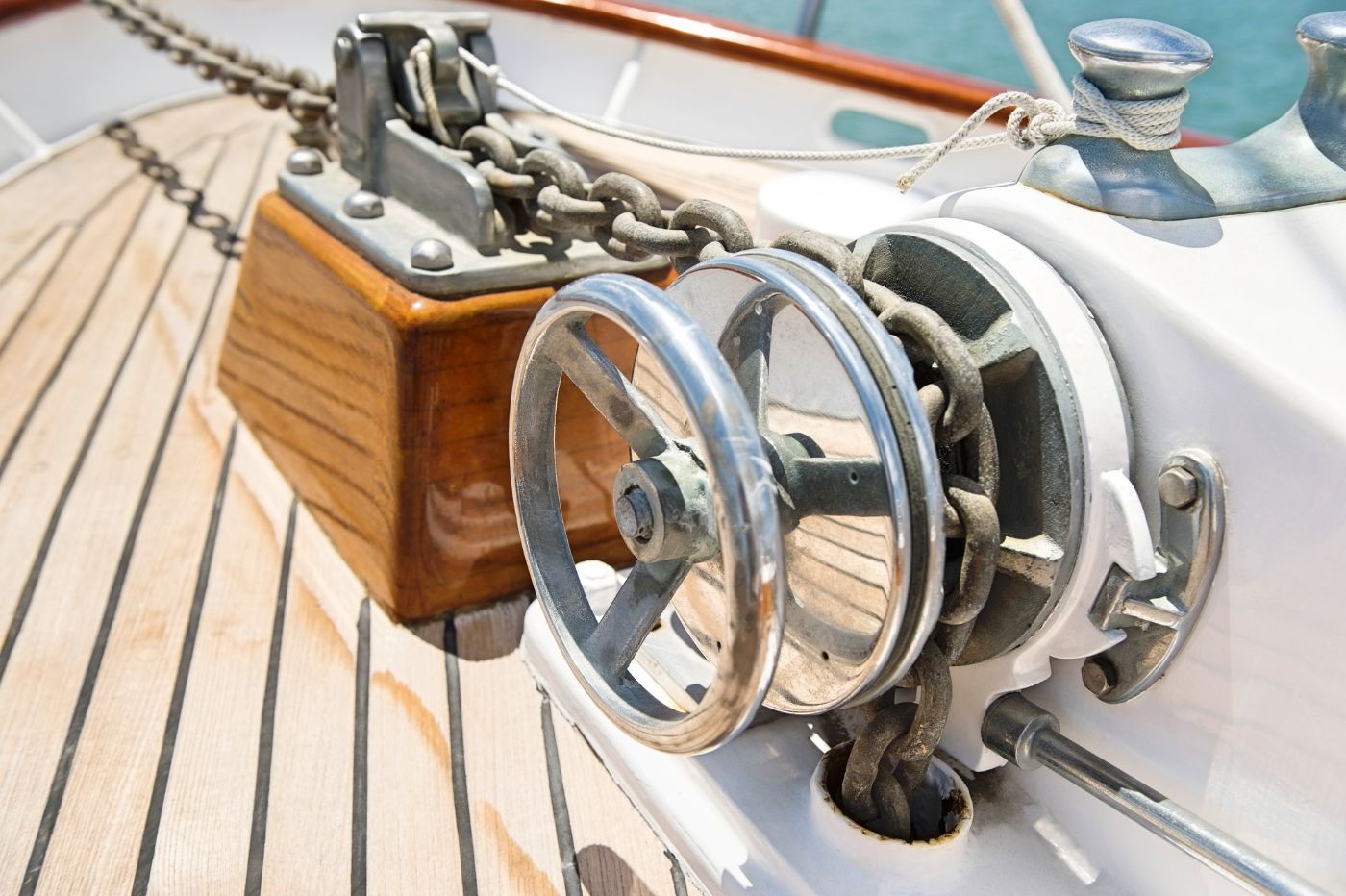
Most windlass manufacturers recommend that you don’t leave the rode on the windlass, and that you motor the boat up to the chain and lift slack chain with the windlass and don't pull the boat forward with the windlass. The windlass isn't designed to take the weight of the boat or move it through the water, and it puts a lot of stress on the deck fittings.
Snubbers
Chain does not stretch, so if there is a shock loading on a chain rode it would all pass onto the windlass if the chain were tight on the windlass. A snubber is a stout line with a chain hook on the end. The hook is set on the chain rode, and the other end of the snubber ties to a cleat. Then you let out a little chain and move the load on the windlass to the snubber. Then, if the boat jerks or the wind picks up, the line will stretch and absorb the motion without slamming the boat around.
Additional Gear
Beyond the basics above, there's a wide selection of tools to help you anchor. Some are suppose to help holding, anchor resetting, keep chain from twisting, or help you get your anchor back if it's set a little too hard. There is a lot of disagreement over how useful some of these tools are, so don't just rush out to buy something extra at the boat show without having a need for it.
A Kellet is a weight deployed on the catenary of the rode to sink the rode more and give the rode a better angle on the anchor shank. There is a lot of myth and misinformation about the use of kellets. Many tests show that the primary reason people use them - to increase holding power of the anchor by changing the anchor of pull - isn't very effective. However, they can decrease swing in an anchorage or tame a boat which "dances" at anchor in light air.
Swivels are used in place of a shackle. They keep twist out of your rode when you retrieve it, and help your anchor settle in the roller bracket. However, they add another point of failure, can be expensive, and aren’t needed unless an anchor spins so much on retrieval that the chain jams the windlass.
Trip Lines help break an anchor out when it's stuck firm, and help you track where your anchor really sits on the bottom. It's a line tied to a ring on the anchor, with a float. It can be handy for breaking the anchor out because you can apply force from a different angle, but they can be an entanglement hazard in a crowded anchorage.
How an Anchor Works
To help pick the right ground tackle, you should understand how it works and why we make the choices we do. It's not just a matter of weight, it's a combination of all the factors about the anchor and the rode which give holding power.
No matter the style of anchor, they all have a shank where the rode attaches and some sort of hooks, blades or flukes to dig into the bottom. If look at the anchors in the image below, you'll see all the shapes will dig, plow or pull against the force pulling on the anchor - which is the boat.
For a detailed overview of anchor workings, as well as a more comprehensive overview of anchor types (I'll list some examples later on), I recommend reading my guide on anchor types.
It's All About the Scope
Now, imagine dropping any of those anchors in 30' of water and letting out exactly 35' of rode. The anchor will lie flat on the bottom, sure, but what happens the second the boat blows backwards? The rode tightens, and the anchor is pulled almost straight up. There's no way those flukes and blades will have time to slow the boat down.
Instead, picture 30' of water with 200' of chain out. The boat will drift back from the anchor until it's stretched, but a good part of the chain will settle on the bottom. That chain does two things - first, it adds its own resistance to pulling. But the most important thing it does is pull on the shaft of the anchor, but at a horizontal angle that helps the pointy parts dig into the bottom to resist that pull.
And that's where you get good holding power. You need enough weight in the anchor, but you also need it pulling on the anchor in the right direction so the anchor digs in. That's also the reason you need a length of chain on the end of that rope rode - it lies on the bottom and keeps that pull in the right direction.
Setting and Resetting
As we learned, they pulled anchors in one direction, and will they dig in and hold with the force applied along the shank. But winds shift. So what happens as a boat swings with the wind? The force is no longer along the shaft, it moves to the side. With a 180° wind shift, the force will be in the opposite direction, the best direction to pop the anchor right out of the bottom.
A well-designed anchor, if it gets pulled out during a wind shift or swing, will quickly dig back into the bottom and set itself. If an anchor lies on its back with no flukes on the bottom, it can not reset and you will drag. Modern anchors add roll bars and weight, and angled flukes and pieces designed to flip the anchor around and reset it.
If all is well, your anchor may reset itself several times in the course of one stay at anchor and you'll never know it. If it doesn't, you may have an unpleasant surprise when you drag anchor.
Choosing and Sizing Ground Tackle
The most read source of information on sizing ground tackle comes from anchor vendors. They will all have tables of recommendations for their own anchors based on the weight, length, and type of your boat. The best guides will allow for all these, since length and windage can play a bigger role in loading on your anchor than you may expect.
They base these guides on the holding power of the anchor and the estimated loads on it from your boat in different conditions. For a few examples, check out:
Good resources for selecting ground tackle:
You'll also find recommendations for chain sizes, which is helpful since chain vendors rarely have the same detailed product selection tools in their marketing materials.
Anchor Types
There are a few factors that go into the style of anchor you may choose, and it's often advisable to carry more than one type of anchor. The first factor is the type of bottoms you expect to encounter. For example, if you're never leaving the Chesapeake with your boat, an anchor that grabs and holds in mud will suit you well. But cruising in an area with a lot of rocks or grass, you may need something different.
The other thing to consider is what fits on your boat. Some of the newer anchor styles are quite different in dimension from traditional anchors and don't fit well on existing bow rollers, especially the new roll bar anchors with tall, flatter shanks.

Our boat's anchor roller fit a 105 pound CQR perfectly, but when I replaced it with a Manson Supreme it was a tougher fit. The roll bar makes it really wide, and the tall shank bent the retaining pin so much that we had to cut the old one off to replace it. We've had to improvise to make it work, and nothing larger would fit. You may need to replace your bow roller or some of its hardware if you're changing the basic style of your anchor.
Many vendors have line drawings with dimensions on their websites. I made a cardboard pattern of our Manson and tried to fit it before I bought one, just to be sure.
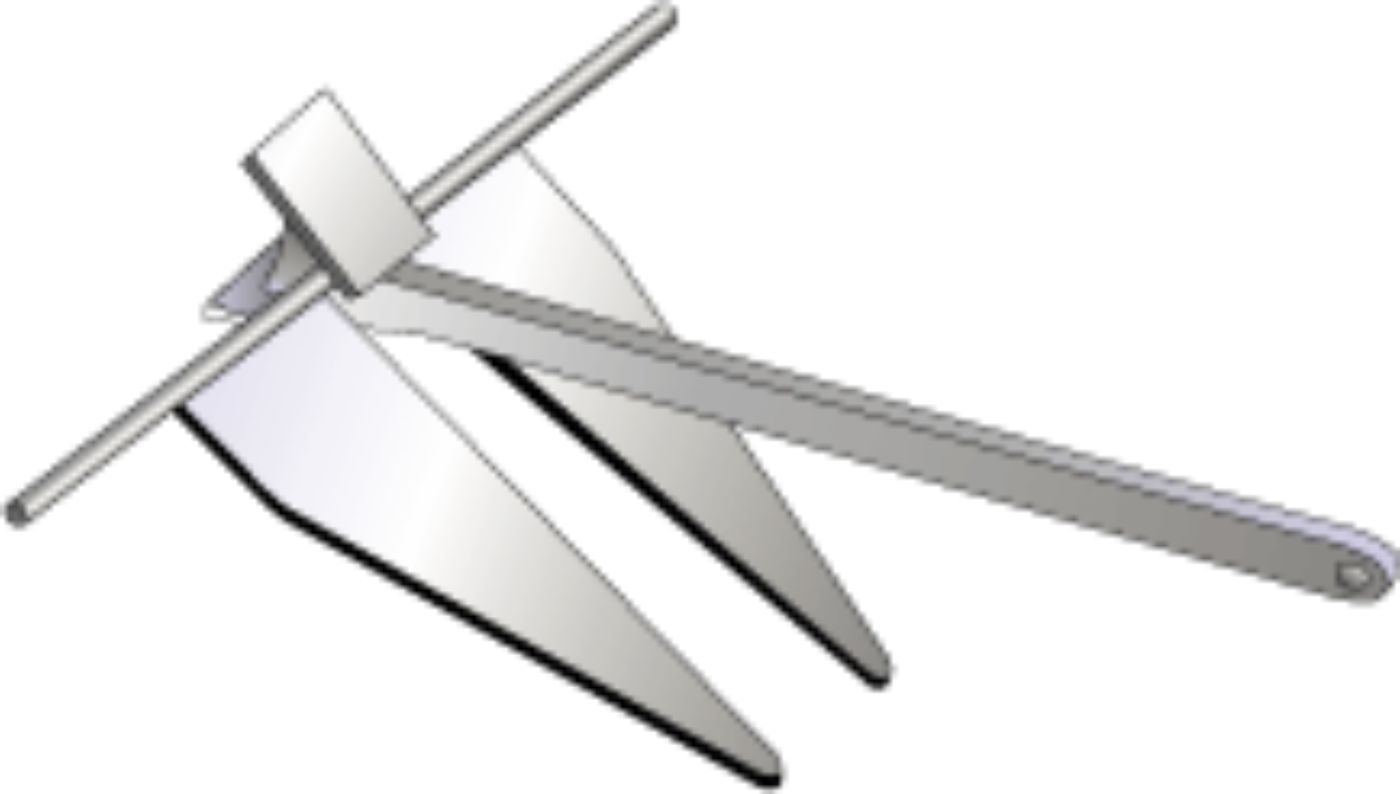
Fluke
Anchors with paired flukes like the Danforth and Fortress do well in a range of conditions, but may struggle to set in grass and hard bottoms.
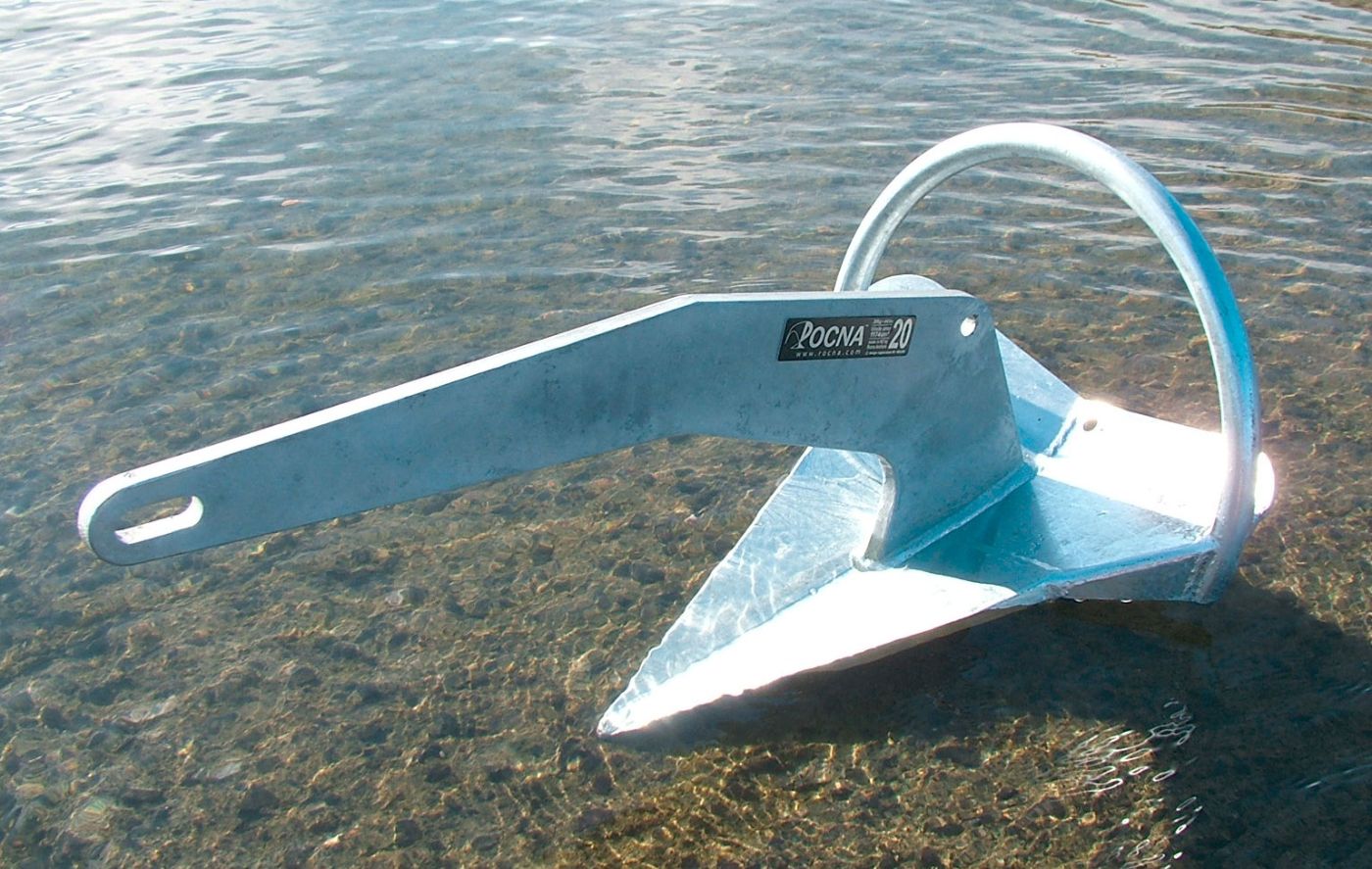
Roll Bar / Scoop
The newest generation of anchors, the Rocna, Manson, and others, are large anchors which flip quickly to reset and set well in most conditions.
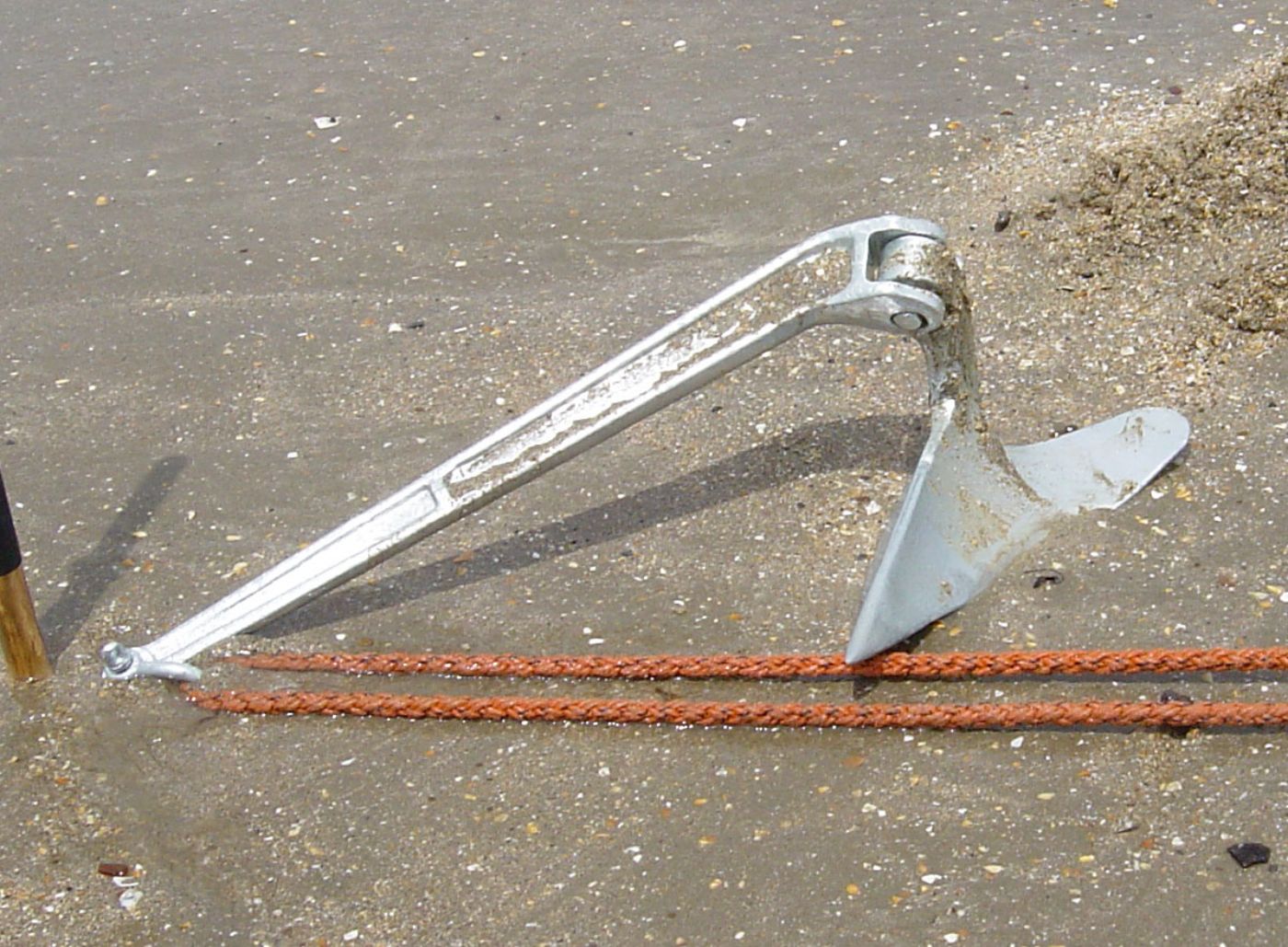
Plow
CQR and Delta anchors get their name from the shape of their blades, the CQR has a hinge, and the Delta does not. They reset well and hold in grass and sand, but may suffer with rocky bottoms and soft mud.
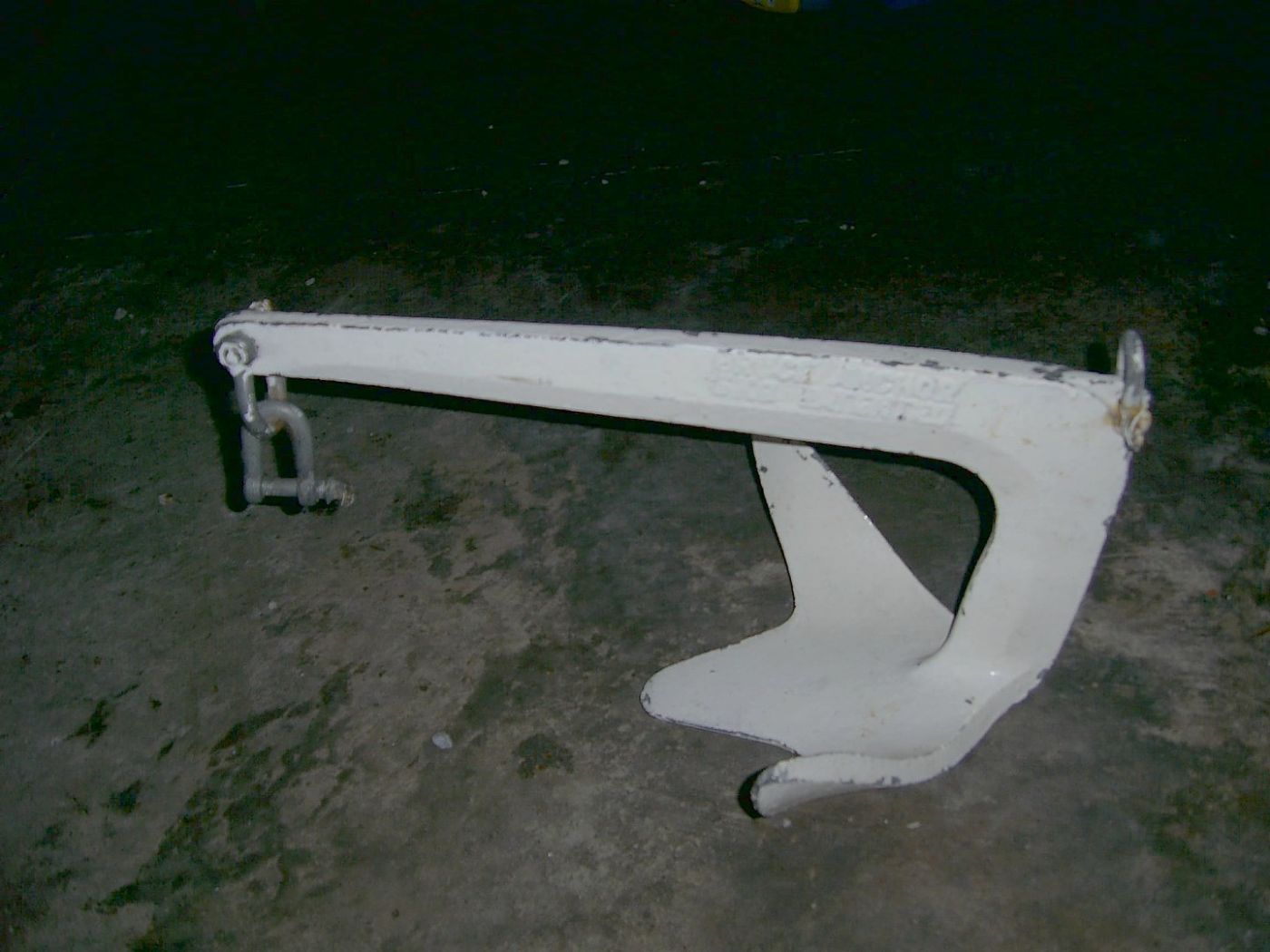
Claw
The Bruce anchor is an one of the best known claw anchors. They set well and right easily, but may not dig in well with hard packed mud and grass.
Grapnel
Grapnel anchors are more popular as small boat and dinghy anchors, since they fold up easily for compact storage. They aren't great for primary anchors on big boats, but are perfect for keeping your dinghy in place while you're off snorkeling.
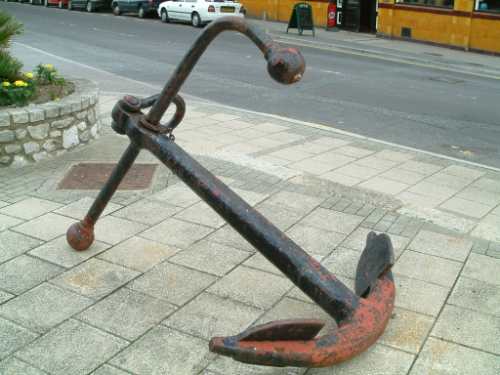
Fisherman's Anchor
This is the classis "tattoo anchor" that you think of, with a crossbar and a pair of large hooked flukes. They are awkward to store and handle, but hold well in rocks. Most don't use them as a primary anchor, but they are popular for storm and emergency anchors.
Other Styles
This list is far from exhaustive, and there have been many new innovations in anchor technology over the years, from the Bulwagga to various box anchors, which don't even look much like anchors as we think of them. All have their strengths and weaknesses, so research carefully and try to find someone with real-world experiences with them.
Remember, there is no "right" or perfect anchor, so look at a lot of options to see what fits your boating style.
Rode Choices
Rode options are a lot simpler than anchor choices, since there are two choices - all chain, or rope/chain. All rope rodes are only suitable for temporarily anchoring small boats like dinghies and kayaks.
All Chain
All chain rodes hold well, and you can get away with less scope for the same holding. They are very popular with bluewater cruisers and anyone who anchors near coral.
But it's heavy and puts a lot of weight on the bow of a boat. Unless your boat and rode is small, chain rodes are very difficult to use without a good windlass.
Rope/Chain
Rope rodes weigh a fraction of chain rodes, and are easier to handle without a windlass. There's built-in shock absorption in the rope, it costs a lot less, and you can move it from the bow.
But rope can chafe and cut, and you will need a length of chain. The chain is usually spliced right to the rope, though some rope rodes have a reinforced eye splice to attach a shackle instead. The splice method is smaller and more compact, but you can't take the chain off easily. But the eye splice can be large and awkward when it gets the windlass.
For a more in-depth explanation on selecting and installing the right anchor rode, I recommend reading my article here.
How to Deploy Ground Tackle
You'll need to have your anchor and rode installed correctly for maximum effect and safety, and when you use it, taking a little care and going slowly will pay off.
Installation Tips
- All chain rodes should be attached to the boat with a long strop of high tensile line, like Spectra or Vectran. You can use a shackle, but if you need to cut the anchor loose in an emergency, you will have trouble with a shackle.
- Rope rodes tangle less if stored in a bag and are easier to move.
- You can tie your rope rode to something permanent if you have a ring in the anchor locker.
- ALL shackles in your ground tackle should be properly seized. Keep a spool of seizing wire in your tool bag, you’ll use it on most of the shackles on your boat.
- All chain rodes will usually pile themselves up in the anchor locker. To install, attach it to the boat and bring it up with windlass. The stack should avoid tangles as it piles naturally.
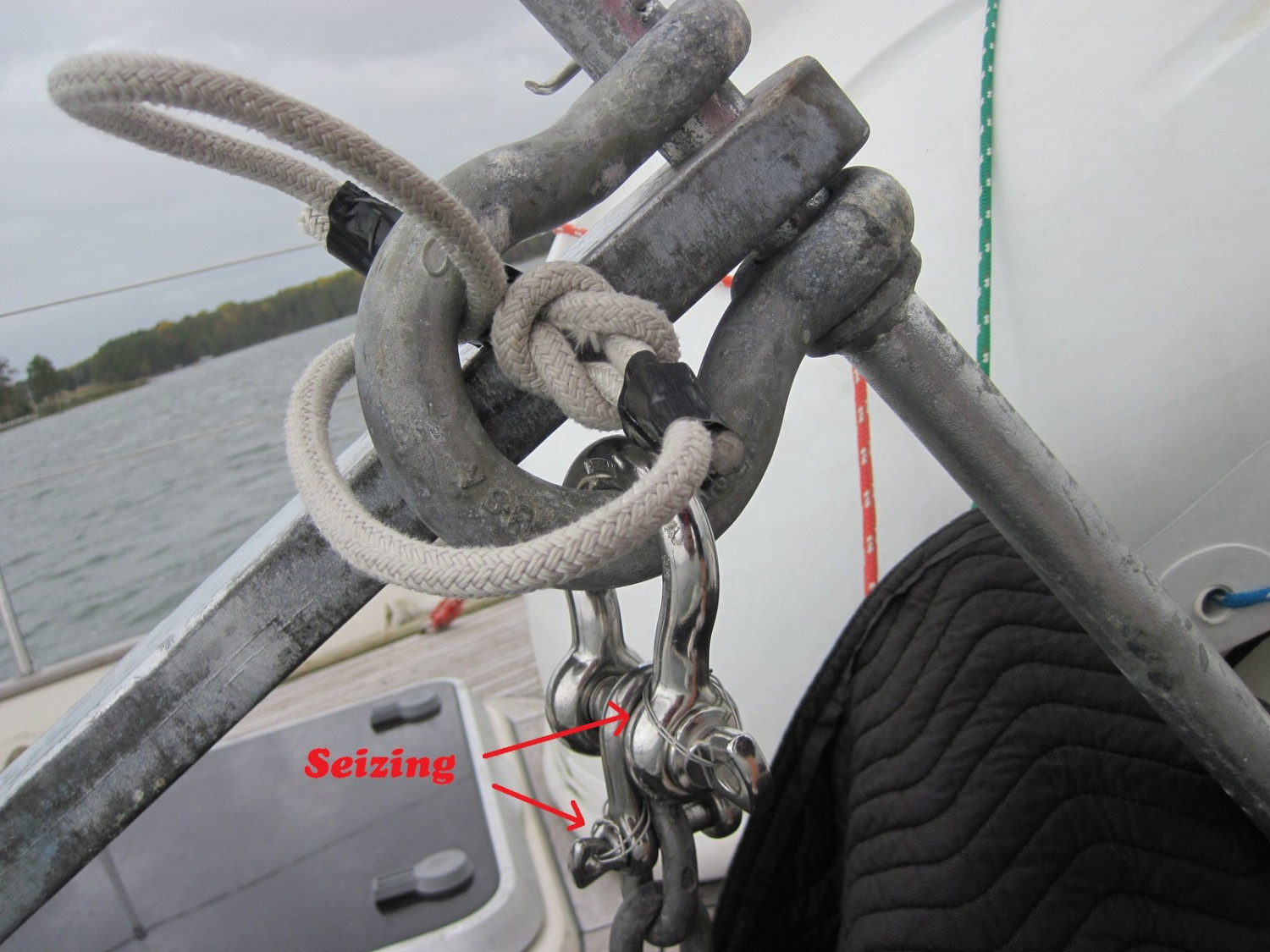
Setting Tips
For a full guide to setting your anchor, check out How to Anchor a Boat: 7 Critical Steps (Lake, River, Sea).
The key takeaway when deploying your tackle? Do it in a controlled fashion, don't rush, and plan.
- For chain rodes, lower it at a reasonable pace. Avoid free-falling the anchor unless it's an emergency.
- Control your anchor with rode/chain rodes, don't just chuck it in the water and let it fly. Any knots or tangles will fly right over with it.
- Before you set your rope/chain rode, "fake" it out on the deck. This means laying it out in neat rows, which will pay out cleanly as you lower the anchor.
- If you don't have a windlass, consider getting a good pair of gloves to help your grip and protect your hands.
How to Check Your Ground Tackle
Periodic inspection if your ground tackle will prevent unexpected failures and help you sleep better at night. A few times a season, look over your gear and perform these simple inspections.
- Check all shackles for proper seizing and replace seizing as needed.
- If your anchor has any moving parts, make sure they move freely and are clear of jamming materials.
- Inspect the anchor and all chain for rust. A little surface rust isn't abnormal in salt water, but you don't want to see any penetrating or flaking.
- Look for any chafe or wear on the rope portion of your rode. Pay close attention to the rope/chain splice if you have one.
- Perform periodic service and maintenance on your windlass as per the manufacturer's instructions.
And for added life for all your ground tackle - and especially your windlass - give it a rinse with fresh water when you're done with it.
Did you find the answer to your specific question?
👍 0 👎 0
Leave a comment